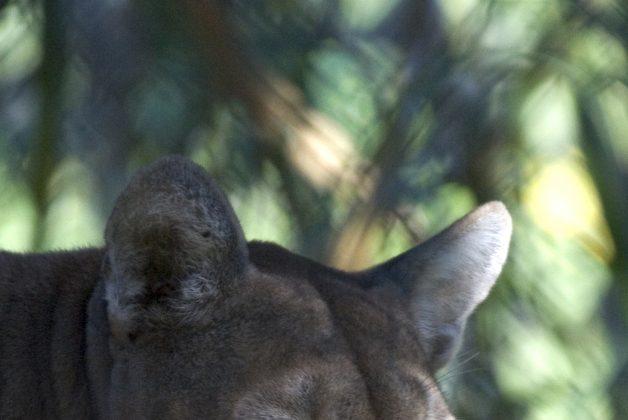Florida is a pretty incredible place. It has some of the greatest biological diversity – the widest variety of plants and animals – in the entire country, and is home to many species found nowhere else in the world. It’s also home to people – lots of them. In fact, with nearly 20 million residents, Florida recently surpassed New York as the third most populous state in the entire country. The economy has picked up once again and development and road building are accelerating. Florida is also a top travel destination in the world, hosting 93.7 million visitors in 2013, and many visitors return to live in Florida, encouraging the building of more homes and highways. All this places the Sunshine State in the unique position of having both tremendous wildlife diversity and mounting pressure from development.
What’s At Risk
Among the many species threatened by this nonstop development is our state’s official animal, the Florida panther. With just an estimated 100-180 adults left in the wild, the Florida panther is one of the most endangered mammals in the country. Once ranging across the southeastern U.S., today it is restricted to south Florida, in just five percent of its historic home range. The greatest threat to panther survival is the loss of its habitat, which is continually being destroyed, fragmented and degraded. And it isn’t just the buildings, but also the roads that connect them that cause problems. Wide-ranging panthers have to cross dangerous roads and highways in their search for territory, food and mates, and collisions with vehicles take a toll on the small population. Vehicle strikes are the greatest source of human-caused mortality for Florida panthers. In fact, 2014 set a new and tragic record for panthers lost to vehicle collisions, with a total of 25 panthers killed.
The Work Ahead
Fortunately, Florida’s Water and Land Legacy Conservation Amendment was passed by an overwhelming 75% of Florida voters in November. This constitutional amendment (Amendment 1) will set aside an estimated $18 billion over the next 20 years to fund water and land conservation, management and restoration, including protecting important habitat for Florida panthers and other wildlife. It takes a percentage of the existing documentary stamp tax revenues generated by real estate transactions and dedicates them to protecting and restoring important habitat on land and water. This source of funding was used for nearly two decades to fund the land acquisition program and because it is tied to development, the very thing that contributes to habitat destruction is also helping to prevent it.
Defenders is hard at work to make sure that elected officials will put that money to use in the way that the conservation amendment (and the Floridians who voted for it) intended, not on shopping lists of inappropriate projects brought to them by lobbyists. We are working with our members and supporters to remind their elected officials that they knew exactly what they were doing when they voted for the amendment, and that they expect their legislators to carry out the voters’ wishes. Amendment 1 funds could be spent to help secure, manage and restore important habitat and corridors for the panther and its prey, expanding and buffering protected areas, and protecting lands to enable construction of more wildlife crossings.
Saturday, March 21, is Save the Florida Panther Day, when Florida residents and visitors celebrate the state’s official animal. The Florida Panther National Wildlife Refuge will host its annual Open House to celebrate, and since increasing human tolerance for sharing the landscape with a large predator is key to panther recovery, I will be there along with our Southwest Florida Coexistence Coordinator Lisa Östberg and volunteers to provide visitors with information about living with panthersand other wildlife. The refuge interior is not normally open to the public, and the event gives people the opportunity to explore panther habitat through swamp buggy tours and guided walks. Even if you don’t live in Florida, you can join in on the fun of this important day by learning more about the plight of these highly endangered cats and helping to get the word out.
When the Florida legislature designated the third Saturday in March as Save the Florida Panther Day they said, “it is proper and fitting for all Floridians to pause and reflect on the plight of the Florida panther and the task of preserving this rare component of Florida’s diverse natural resources as a legacy to generations of Floridians yet to come.” If we’re truly going to do that, we need to be planning ways to give these endangered cats more room to roam so that they can remain a viable part of the wild Florida landscape.
This article was written by Elizabeth Fleming, the senior Florida Representative for defendersblog.org. This article has been republished with permission, original article here.

Friends Read Free